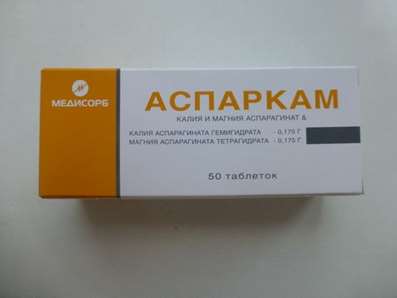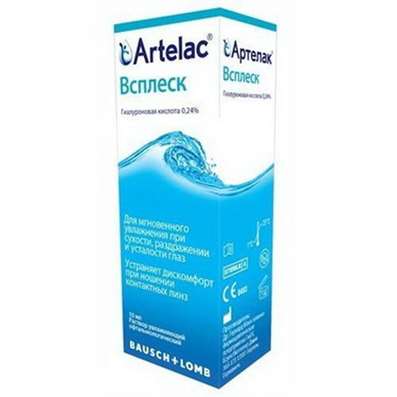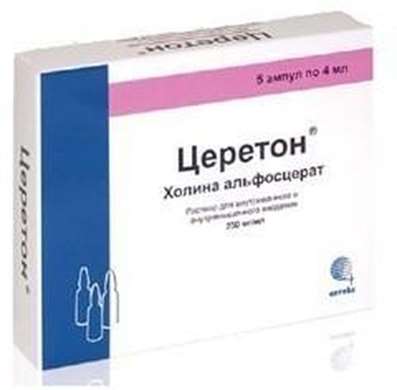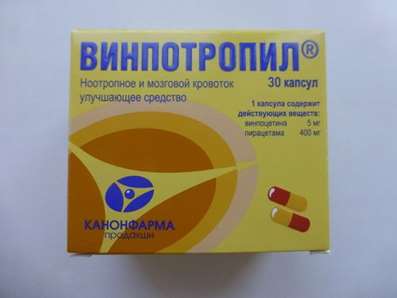Instruction for use: Febrofid
I want this, give me price
Active substance Ketoprofen
ATX code M02AA10 Ketoprofen
Pharmacological group
NSAIDs - Propionic acid derivatives
Nosological classification (ICD-10)
I80 Phlebitis and thrombophlebitis
Diseases of peripheral vessels, Inflammation of superficial veins, Inflammatory diseases of veins, Deep venous thrombophlebitis, The disease of veins, Disease of the veins of the lower extremities, Diseases of peripheral vessels, Migrating phlebitis, Insufficiency of veins of lower extremities, Exacerbation of chronic thrombophlebitis, Acute thrombophlebitis,Acute thrombophlebitis of superficial veins, Periphlebitis, Periflebit surface, Superficial inflammation of veins, Surface thrombophlebitis, Surface phlebitis, Thrombophlebitis, Deep vein thrombophlebitis, Thrombophlebitis superficial, Phlebitis, Phlebitis of deep veins, Phlebitis of superficial veins, Phlebopathy, Chronic thrombophlebitis, Endophlebitis
I88 Nonspecific lymphadenitis
Lymphadenitis, Lymphadenitis of unspecific etiology, Superficial lymphadenitis
I89.1 Lymphangitis
Lymphangitis, Lymphagitis, Lymphangitis acute
M13.9 Arthritis, unspecified
Arthritis,Purulent arthritis (non-infectious), acute Arthritis,Pain in acute inflammatory diseases of the musculoskeletal system,Pain in chronic inflammatory diseases of the musculoskeletal system,The pain in osteoarthritis, Inflammation in osteoarthritis, Inflammatory arthropathy, Inflammatory and degenerative joint diseases, Inflammatory disease of the musculoskeletal system, Inflammatory joint disease, Inflammatory diseases of the musculoskeletal system, destructive arthritis, The disease of the musculoskeletal system, Diseases of the musculoskeletal system, Diseases of the musculoskeletal system and connective tissue, Infections musculoskeletal system, monoartrit, Non-infectious arthritis, rheumatic arthritis, Osteoarthritis, Acute inflammation of the musculoskeletal tissue, Acute inflammatory diseases of the musculoskeletal system, Acute inflammatory condition of the musculoskeletal system, Acute arthritis, Acute osteoarthritis, Post-traumatic osteoarthritis, Reactive arthritis, Chronic inflammatory diseases of the joints, Chronic arthritis, Chronic inflammatory arthritis, Chronic inflammation of the inner layer of the joint capsule, Chronic inflammation of the joint capsule,Chronic inflammatory disease of the joints, Exudative arthritis
M54.4 Lumbago with sciatica
Pain in the lumbosacral spine, Lumbago, Sciatica, Lumbar syndrome
M65 Synovitis and tendosynovitis
Acute tenosynovitis, Tendovaginitis (tenovaginitis), Tendosinovit (tenosynovitis), Tendovaginitis, Osteoarthritis in musculo-articular diseases, Inflammatory disease of soft tissues, Nonspecific tenosynovitis, Tendosinovit
M71 Other bursopathies
Bursitis, Bursopathy, Diseases of soft tissues, Osteoarthritis in musculo-articular diseases, Inflammatory disease of soft tissues, Subacute bursitis
M79.1 Myalgia
Myofascial pain syndromes ,Pain syndrome in musculo-articular diseases, Pain syndrome in chronic inflammatory diseases of the musculoskeletal system, Pain in the muscles, Tenderness of muscles, Muscular soreness in severe physical exertion, Painful conditions of the musculoskeletal system, Pain in the musculoskeletal system, Pain in the muscles, Pain at rest, Muscle aches, Muscle pain, Musculoskeletal pain, Myalgia, Muscle pain, Muscle pain at rest, Muscle pain, Muscular pain of non-rheumatic origin, Muscle pain of rheumatic origin, Acute muscle pain, Rheumatic pain, Rheumatic pains, Myofascial syndrome, Fibromyalgia
M79.2 Neurology and neuritis, unspecified
Pain syndrome with neuralgia, Brachialgia, Occipital and intercostal neuralgia, Neuralgia, Neuralgic pain, Neuralgia, Neuralgia of intercostal nerves,Neuralgia of the posterior tibial nerve, Neuritis, Neuritis traumatic, Neuritis, Neurological Pain Syndromes, Neurological contractures with spasms, Acute neuritis, Peripheral neuritis,Post-traumatic neuralgia,Severe pain of a neurogenic nature, Chronic neuritis, Essential neuralgia
R52.0 Acute pain
Acute pain syndrome, Acute pain syndrome with osteoarthritis, Acute pain syndrome of traumatic origin, Severe pain of a neurogenic nature, Severe pain, Pain syndrome at delivery
T14.0 Surface injury of unspecified body region
Abrasions, Scratch, Skin Wounds, Wounds of soft tissues, Hematoma, Hematoma of traumatic origin, Hematomas, Hematomas of muscles, Hematomas of soft tissues, Healing of the skin, Bruise, Bruising due to sprains and bruises, Microtrauma, External bruises, Small combing, Superficial hematoma, Superficial damage to the skin and mucous membranes, Subcutaneous hematoma, Post-traumatic hematoma, Post-traumatic disturbance of microcirculation, Skinness of the skin, Traumatic plexus lesions, Injury, Contusion of soft tissues, Joint bruise, Traumatic bruises, Traumatic injury, Primary treatment of surface contaminated wounds, Abrasion, Bruise
T14.3 Dislocation, sprain and damage to the capsular-ligamentous apparatus of the joint of the unspecified area of the body
Painful stretching of muscles, Pain and inflammation in tension, Dislocation of dislocation, Degenerative changes in the ligamentous apparatus, Edema due to sprains and bruises, Edema after interventions for sprains, Damage and rupture of ligaments, The musculoskeletal system is damaged, Damage to ligaments, Damage to the joints, Ligament ruptures, Tendon tendons,Ruptures of the tendons of muscles,Stretching, Crick, Stretching of the muscle, Sprain, Tension of the tendons, Extensions,Stretch muscles, Sprains, Tension of the tendons, Injury of the musculoskeletal system, Injuries to the joints, Injuries of capsule-articular tissues, Injuries of the osteoarticular system, Injuries to ligamentsInjuries to the joints, Joint wounds, Stretching of the ligamentous apparatus, Habitual stretching and tearing
Composition and form of release
Gel for external use 100 g
ketoprofen lysine salt 2.5 g
auxiliary substances: polyethylene glycol; methylhydroxybenzoate; propylhydroxybenzoate; carbomer; triethanolamine; purified water
in tubes of aluminum for 30 or 50 g; in a pack of cardboard 1 tuba.
Description of dosage form
From a colorless to light yellowish color, a gel that is transparent or slightly opalescent.
Characteristic
It belongs to the group of NSAIDs (non-steroidal anti-inflammatory drugs).
pharmachologic effect
Pharmacological action - anti-inflammatory local, analgesic.
In the form of a gel provides local treatment for joints, tendons, ligaments, muscles, skin, veins, lymphatic vessels and lymph nodes. With articular syndrome, weakening of pain in joints at rest and during movement, reduction of morning stiffness and swelling of the joints.
Pharmacokinetics
It penetrates well through the skin. Bioavailability of the gel is about 5%. The absorbed part of ketoprofen binds to plasma proteins approximately 99%. Metabolised in the liver. About 80% of the dose is excreted in the urine in the form of metabolites, less than 10% - unchanged. Do not cum in the body.
Indication
As a local anesthetic and anti-inflammatory drug with symptomatic treatment: pain in the spine, neuralgia, myalgia; inflammatory-degenerative diseases of the musculoskeletal system, arthritis, bursitis, synovitis, tendinitis, lumbago; uncomplicated injuries, in particular - sports injuries, dislocations, sprains or ruptures of ligaments and tendons, bruises, post-traumatic pains; in the combination therapy for inflammatory diseases of the veins (phlebitis, periphlebitis), lymphatic vessels, lymph nodes (lymphangitis, superficial lymphadenitis).
Contraindications
Hypersensitivity to ketoprofen and / or other constituents of the drug, as well as to other NSAIDs and acetylsalicylic acid (possibly the development of bronchospasm); wetting dermatoses, eczema, infected abrasions, wounds, burns; pregnancy (III trimester), lactation.
pregnancy and lactation
Contraindicated in pregnancy (III trimester); in I and II trimesters - only if necessary. For the duration of treatment, breastfeeding should be discontinued.
Side effects
Allergic reactions, skin hyperemia, photosensitivity, skin exanthema, purpura.
Interaction
In cases of frequent and prolonged use, symptoms of interaction with other drugs may appear, such as in systemic use.
Joint reception with other non-steroidal anti-inflammatory drugs, GCS, ethanol, corticotropin can lead to the formation of ulcers and the development of gastrointestinal bleeding.
Simultaneous administration with oral anticoagulants, heparin, thrombolytic agents, antiaggregants, cefoperazone, cefamandol increases the risk of bleeding.
Reduces the effect of antihypertensive drugs and diuretics (inhibition of GHG synthesis).
Increases hypoglycemic action of insulin and oral hypoglycemic drugs (dose recalculation is necessary).
Co-administration with sodium valproate causes disruption of platelet aggregation. Increases the concentration in the blood plasma of verapamil and nifedipine.
Dosing and Administration
Outwardly. A small amount (3-5 cm) of the gel is applied to a sore spot and it is easy to rub 2-3 times a day.
In the application of a dry bandage is not necessary, because the gel is well absorbed through the skin, has no odor, contains no coloring agents, leaves no greasy stains, does not stain clothes.
special instructions
Avoid contact with the mucous membranes and eyes.
Do not use on damaged skin.
During prolonged use, care should be taken in patients with severe liver and / or kidney failure.
In case of the appearance of a rash, it is necessary to stop treatment and conduct appropriate therapy.
storage Conditions
In the dark place at a temperature of 15-25 ° C.
Keep out of the reach of children.
Shelf-life
2 years.
Do not use after the expiry date printed on the package.

 Cart
Cart





